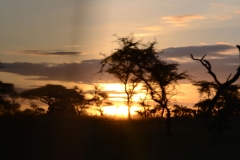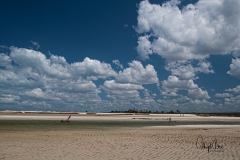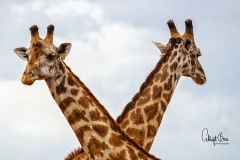











Zanzibar; romantic, exotic archipelago, Only 15 minutes’ flight from the mainland, the wonderfully sleepy island of Zanzibar is one of East Africa’s finest beach destinations, surrounded by coral reefs with idyllic beaches lined by huge sweeping palm trees. Zanzibar is the obvious beach addition to a safari in mainland Tanzania.
Though many visitors spend a night or two in Stone Town, the charismatic island capital, the real attraction of is its glorious coral sand beaches, and the fantastic snorkelling and diving.
Geographically, the island is only around 40mks across and 100kms from north to south at its widest points. Featuring outstanding, powder white beaches along its eastern shores, flanked by barrier reefs, and the UNESCO World heritage site of Stone Town on its western edge, the island itself is fairly narrow, with a ridge running through its middle from north to south. Along its eastern coastline runs a protective barrier reef and then the Indian Ocean. This is where the best beaches are located, all with coral white sand and gently lapping waters.
Along the western side of the island runs the Zanzibar Channel and is where the main town (Zanzibar Town) and where the famous UNESCO World heritage site of Stone Town are located. While there are a few pockets of good beach along this western edge (namely around Kendwa), this side of the island is not really seen as being the place to go for the beach-bound.
With its location, barrier reef and outstanding beaches Zanzibar can offer all of the attractions that most crave such as scuba diving, glorious beaches, fresh seafood and much more. For those that are a little restless there is a small forest in the interior called Jozani that has indigenous red colobus monkeys, and the spice tours in one of the small farms just outside Zanzibar Town are a fascinating glimpse into why this island has become so famous.

Mafia Island (“Chole Shamba”) is part of the Tanzanian Spice Islands, together with Unguja and Pemba. As one of the six districts of the Pwani Region, Mafia Island is governed from the mainland, not from the semi-autonomous region of Zanzibar, of which it has never been considered to be a part.
According to the 2002 Tanzania census, the population of the Mafia District was 40,801.[1] The economy is based on fishing and subsistence agriculture. The island attracts some tourists, mainly adventure scuba divers, game fishermen, and people wanting relaxation.
Mafia Island’s history goes back to the 8th century. The island once played a major role in ancient trade between the people of the Far East and East Africa. It was a regular stop for arab boats. On the tiny island of Chole Mjini, just offshore in Chole Bay, once stood a settlement that constituted one of the most important towns controlling trade from the silver mines of Eastern Zimbabwe, which reached the town via the old ports of Kilwa and Michangani.
In the mid 1820s, the town of Kua on Juani Island was attacked by Sakalava cannibals arriving from Madagascar with 80 canoes, who ate many of the locals and took the rest into slavery.[citation needed]
Under a treaty of 1890, Germany took control of Mafia and constructed the buildings still evident on Chole. Germany paid Sultan Sayyid Ali bin Said al-Said of Oman M 4 million for both the island and part of the mainland coast. In January 1915, Mafia was taken by British troops as a base for the air and sea assault on the light cruiser Königsberg.
The name “Mafia” derives from the Arabic morfiyeh, meaning “group” or “archipelago”, or from the Swahili mahali pa afya, meaning “a healthy dwelling-place”.
In 1995 Mafia Island had financial help from the WWF to make a natural marine wildlife centre instead of making the island a tourist resort, but tourists still go to the marine wildlife centre.
Tanzania’s first multi-user marine park at Mafia Island was established following management recommendations and data from surveys conducted by the Society for Environmental Exploration. [2]

For much of its history, Pemba has been overshadowed by Zanzibar, its larger, more visible and more politically powerful neighbour to the south.
Although the islands are separated by only about 50km of water, relatively few tourists make thier way across the channel for a visit. Those who do so are seldom dissapointed
Unlike flat, sandy Zanzibar, Pemba’s terrain is hilly, fertile and lushy vegetated. Pemba has also been renowned for its voodoo. Much of the island’s coast is lined with mangroves and tidal creeks and lagoons and some idyllic offshore islets.
Wheras Zanzibar is a low-lying coral atoll with broad sandy beaches, Pemba is a proper island with incredibly fertile hilly terrain and spectacular deepwater drop-offs for divers.
Despite its proximity Pemba is really off the beaten track, getting less than 1% of its neighbour’s visitor traffic. Those who do venture here should find an incredibly authentic Swahili Coast experience.
Regular flights make getting here relatively easy these days, more of a problem is the limited choice of accommodation.

About 70 km north of Bagamoyo along a lovely stretch of coastline, and directly opposite Zanzibar, is tiny Saadani. a 1000-sq-km patch of coastal wilderness that is one of Tanzania’s newest national parks. It’s easily accessed from both Dar es Salaam and Zanzibar as an overnight excursion and is a good choice if you don’t have time to explore further fields.
The main activities in Saadani in addition to relaxing along the wami river, are boat trips, wildlife drives, bush walks and village tours.
Saadani Game Reserve was gazetted in 1964, covering an area of some 350 sq km from the Wami river in the south to the Mligaji river in the north, with the Moshi railway line as the western boundary. Once Saadani became a Game Reserve new species of animal were introduced to compliment the existing diversity. Wildebeest, zebra and eland joined the resident populations including buffalo, elephant, giraffe, lion wild dog and the extremely rare Roosevelt’s sable antelope. Saadani is Tanzania’s only protected coastal wildlife preserve.
The reserve has since expanded to include a further 300 sq km of land north of the Mligaji. This is an important area containing the only permanent elephant population in the area as well as sable antelope.
To the west of the old boundary lies the Zaranyngi forest, another important area for its variety of indigenous vegetation and animal and birdlife. This is also now included in the Saadani boundaries, creating a substantial reserve of over 1000 sq km.
Saadani is where the beach meets the bush. The only wildlife sanctuary in East Africa to boast an Indian Ocean beachfront, it possesses all the attributes that make Tanzania’s tropical coastline and islands so popular with European sun-worshippers. Yet it is also the one place where those idle hours of sunbathing might be interrupted by an elephant strolling past, or a lion coming to drink at the nearby waterhole!

Dar es Salaam is a hustling, bustling seaport on the coast of Tanzania accessing one of the most important sea routes on earth. To most travellers though, the city is just a convenient port of call on the way to the more exotic Zanzibar, Pemba or Mafia islands, Tanzania’s national parks, or as a business destination.
This is a great pity, because “Dar”, as it is lovingly called by aficionados of the city, is a fascinating rabbit warren of a tropical port, often surprising the wanderer with scenes of breathtaking beauty – and there is something irresistible about whiling away a few hours sitting at the water’s edge, watching dhows slipping skilfully under the bows of huge cruise liners and cargo ships.
Places of interest
On the northern arm of the harbour is Kivukoni Front, with its frenetic fish market, where every morning at dawn the dhows sail in to offload the night’s catch, and yelling fishwives compete with each other for the best of the catch.
Other places worth a visit in the city centre include the botanical gardens, and the adjacent National Museum, where archaeology buffs can see the skull of “Nutcracker Man”, antique tribal artefacts and some fascinating World War One memorabilia.
Wandering the streets of Dar es Salaam is nowhere more rewarding than in the Asian business district, along India Street and the intersecting Indira Ghandi Street. Here the flavours and smells are of a little Bombay, and if there’s anything you need to buy for your holiday, this is where you’ll find it. In this concentrated section of the city, you’ll find some of the best restaurants in East Africa, notably on Jamhuri, Mkunguni, Zanaki and Kisutu Streets.